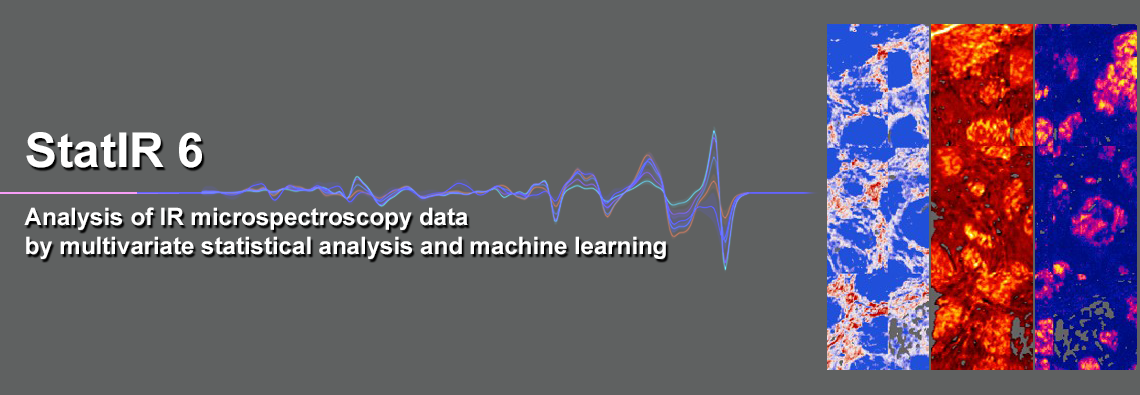
Infrared microspectroscopy and imaging give fundamental information on the chemical composition and spatial organization of complex materials and on the conformation of molecules with spatial resolutions in the dozen microns to the submicron range. Data analysis is one of the most crucial parts of the process to unravel the rich information contained in the infrared spectra of complex systems and numerous specific techniques can be applied.
One of the most successful approaches lies on the statistical analysis of large datasets to explore their spectral variability, classify samples on the basis of their infrared spectra, find correlations between data even including data from different techniques, or establish predictive models for quantification. Such methods can only be successful if specific spectral preprocessing methods are applied to remove artefacts and confusing variations. Specific software, preprocessing techniques and strategies must be applied requiring specialized training combining signal processing and multivariate statistical analysis.
The SMIS beamline organizes the sixth edition of its infrared microspectroscopy data analysis course that will be held at SOLEIL from Wednesday, May 11 to Friday, May 13. The language course will be English.
The SMIS beamline is the infrared microspectroscopy beamline of SOLEIL synchrotron facility located in Gif-sur-Yvette near Paris. The SMIS beamline has over 10 year experience in the measurement and analysis of microspectroscopy data. The course will be given by Ferenc Borondics (an expert in physical-chemistry), Marko Toplak (a machine learning specialist), and Christophe Sandt (biospectroscopist).
The formation will be held online and opened to all past and future users of the beamline. The training will be held free of charge.
The course will deal with the main multivariate statistical analysis techniques such as principal component analysis, multivariate regression techniques and cluster analyses. Machine learning methods such as artificial neural networks will also be touched upon. We will devote some time to the analysis of spectral images with the open-source software Quasar. A hand-on session with participant data will be held.
Downloading courses
Dowload the courses ![]() Quasar training (12.17 MB).
Quasar training (12.17 MB).
Speakers
The course will be given by
Ferenc Borondics (an expert in physical-chemistry),
Marko Toplak (a machine learning specialist),
and Christophe Sandt (biospectroscopist).
Program
Preliminary programm
May 11th |
May 12thSupervised learning |
May 13rdUnsupervised learning |
|
| 09:00 - 10:30 |
SESSION 1 |
SESSION 1 |
SESSION 1 |
| 10:30 - 10:45 | Break | Break | Break |
| 10:45 - 12:00 |
SESSION 2 |
SESSION 2 |
SESSION 2 |
| 12:00 - 13:30 | Lunch break | Lunch break | Lunch break |
| 13:30 - 15:30 |
SESSION 3 |
SESSION 3 |
|
| 15:30 - 15:45 | Break | Break | |
| 15:45 - 16:00 |
SESSION 4 |
SESSION 4 |
The formation will be held online and opened to all past and future users of the beamline. The training will be held free of charge.
Registration is open: registration.
Deadline
- Registration : May 10th, 2022
How to attend the training
You will be able to log in to the course using the following link:
Available soon
Download Quasar
The training will be held with the open-source software Quasar.
Please download it before the course here.
For further information please contact: school-STATIR6-2022@synchrotron-soleil.fr
